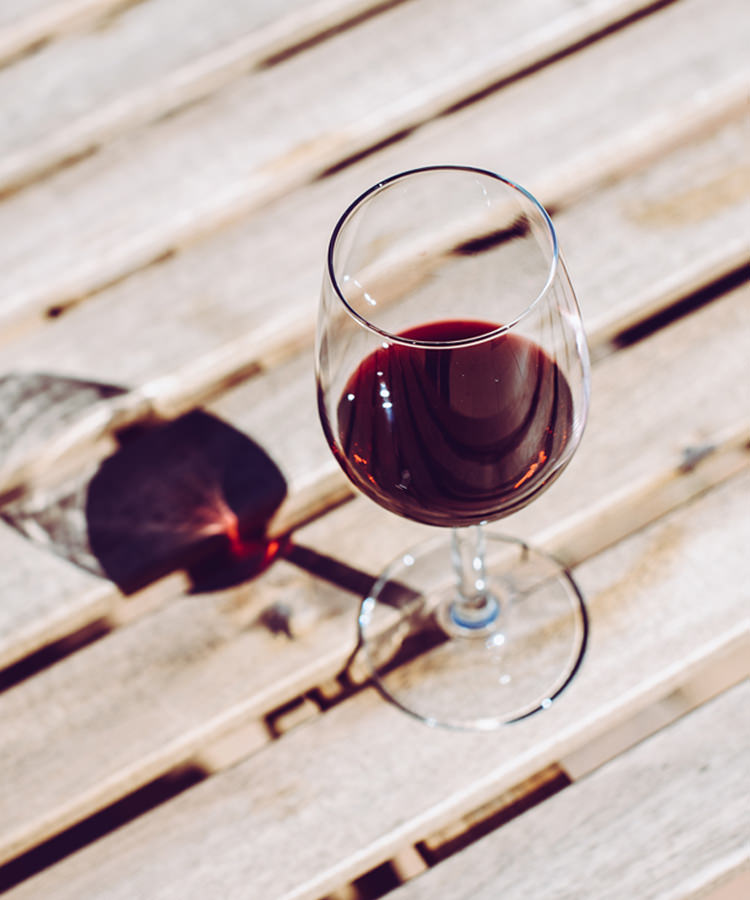“I tend to like a red blend, so what should I drink?” In the past two years, more wine drinkers have begun to use the term “red blend” to indicate their wine preferences in the same way that one might use the words Cabernet Sauvignon or Pinot Noir. But although it’s excellent to be able to verbalize and ask for a preferred style of wine, there’s one problem: A red blend isn’t one single style of wine. In fact, red blend doesn’t really mean anything at all. So why do more and more wine drinkers proclaim that it’s their favorite kind of wine?
When it comes down to it, a red blend is exactly what it sounds like: a red wine that is a blend of more than one grape, rather than being made from a single variety. Notably, this definition does not specify any particular grapes that must be used in the blend, meaning that any grape is fair game, from Cabernet Sauvignon and Merlot to Trousseau and Poulsard. Therein lies the problem: A category of wine cannot reliably indicate one style if it can potentially include any permutation of red grapes.
The rising popularity of the American red blend category likely has something to do with the so-called style that is now commonly associated with red blends. The concept of blending is certainly not foreign to U.S. winemakers, as blends of wines allow producers to combine and complement favorable qualities from several different grape varieties, stretch a more noble grape by blending it with a higher-yielding, easier-to-produce grape, or hide undesirable grapes in minute blending percentages. In fact, California wine law even allows for a single-varietal wine to blend in up to 25 percent of other grapes, meaning that a quarter of your California Cabernet Sauvignon could theoretically not even be Cabernet Sauvignon.
In the past five years, however, more big-brand wineries have started to make inexpensive California wines marketed specifically as “red blends.” The trend really took off in 2015, when Nielsen estimated that red blends comprised 13 percent of all off-premise wine sales, second only to Cabernet Sauvignon in red wine categories. Based on grapes like Zinfandel, Cabernet Sauvignon, Merlot, and Shiraz, these red blends are typically full-bodied, round, rich, and juicy, providing full flavor and drinkability at a low cost. This is the flavor profile that most self-proclaimed red blend lovers have come to expect, even though the style encompasses far more.
Even wine publications list “red blend” as a wine “varietal” along with the world’s most important international grapes. But the discrepancy becomes increasingly clear when viewing the category in this context. Just the first of over 500 pages of Wine Enthusiast red blend ratings includes wines from Piedmont, Italy; Rioja, Spain; Burgenland, Austria; Walla Walla, Washington; and regions of California from Livermore Valley to Paso Robles. All of these wines taste markedly different, emphasizing the point that “red blend” is not a reliable indicator of a single style of wine.
That doesn’t mean that red blends should be tossed aside, however. On the contrary, even more attention should be paid to the category of red blends. Some of the world’s most famous wines are, in fact, red blends, particularly those with difficult grape-growing conditions. Take Bordeaux, for instance: Because the wet maritime climate can create a difficult growing environment and significant vintage variation, winemakers don’t typically place all their bets on a single grape variety. Rather, they grow several grape varieties and blend them together to create a complete wine, each grape making up a piece of the puzzle. This is also why certain wines throughout the world are referred to as a “Bordeaux blend” — they are made from some of the six classically blended Bordeaux grape varieties. The Rhône Valley is another famous region for blending, but again, no one would argue that a Bordeaux blend and a Rhône blend are the same style of wine.
So what’s a red blend lover to do? The key is to break this gigantic category down. Find out what grapes are in your favorite red blends or where they come from, and look for other blends that have similar qualities. After all, Nielsen’s 2015 report noted that half of all those surveyed felt that red blends allowed them to confidently experiment with wine, and there’s no reason to quash that experimental notion. But there’s a way to take on a more guided exploration within the red blend category, and that’s what these wine lovers should embark on next.
